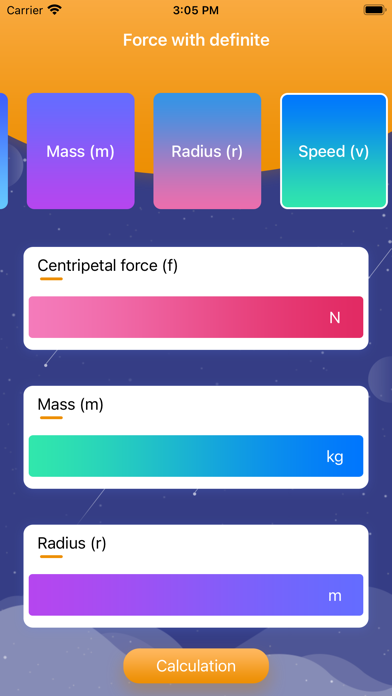Force with definite
iPhone / Références
The centripetal force is named after the effect of the force, because it produces an acceleration toward the center of the circle. It is not some type of force with definite properties. Conversely, forces of any nature can be used as centripetal forces. It's actually a force of some property, or a component of some force, or a couple of different properties of a combined external force along the radius toward the center of the circle.
For an object moving in a circle, the direction of its velocity has to change all the time, and in order to change the direction of its velocity, you need a certain amount of force, so if you don't have a force on the object, isn't it going to fly off in the tangent direction because of inertia? When a body moves in a circle, the centripetal force is exactly the force needed, so it has no "power" to pull the body toward the center of the circle. In fact, if the force applied is greater than the required centripetal force, it will indeed pull the object toward the center of the circle, and if the force applied is less than the required centripetal force, there will be a partial velocity in the horizontal tangent direction, causing the moving object to curve away from its circular orbit.
Centrifugal force is a manifestation of inertia, which does not actually exist. In order for an object to move in a circle, it needs a force directed toward the center of the circle -- a centripetal force. If we set up coordinates at the origin of this object, it looks as if there is a force of the same magnitude and opposite direction as the centripetal force, pushing the object away from the center of the circular motion. (When the force on an object is insufficient to provide the centripetal force required for circular motion, it will appear as if the centrifugal force is greater than the centripetal force, and the object will move away from the center of the circle, a phenomenon called centrifugation.)



